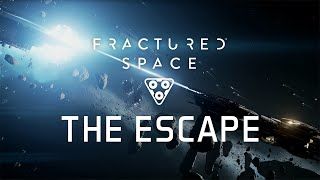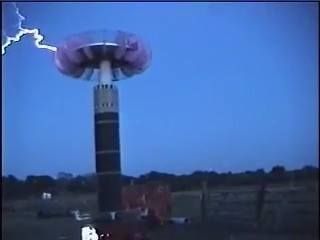Jan 30, 2016
Bringing time and space together for universal symmetry
Posted by Andreas Matt in category: quantum physics
New research from Griffith University’s Centre for Quantum Dynamics is broadening perspectives on time and space.
New research from Griffith University’s Centre for Quantum Dynamics is broadening perspectives on time and space.
The game of Go has long been viewed as the most challenging of classic games for artificial intelligence due to its enormous search space and the difficulty of evaluating board positions and moves.
Google DeepMind introduced a new approach to computer Go with their program, AlphaGo, that uses value networks to evaluate board positions and policy networks to select moves. These deep neural networks are trained by a novel combination of supervised learning from human expert games, and reinforcement learning from games of self-play. Without any lookahead search, the neural networks play Go at the level of state-of-the-art Monte-Carlo tree search programs that simulate thousands of random games of self-play. DeepMind also introduce a new search algorithm that combines Monte-Carlo simulation with value and policy networks. Using this search algorithm, our program AlphaGo achieved a 99.8% winning rate against other Go programs, and defeated the European Go champion by 5 games to 0. This is the first time that a computer program has defeated a human professional player in the full-sized game of Go, a feat previously thought to be at least a decade away.
Lonestar developed by Texas A&M is a possible tool that prospectors can utilize to locate mining opportunities on asteroids.
Astronauts fired this small, rectangular hunk from the International Space Station today. The payload will separate into two autonomous satellites as part of a research program to take us one tiny step closer towards making asteroid mining a reality.
If we ever want to mine asteroids, we’re going to need to step up our game for multiple satellites sharing data and working together. A pair of Texan universities are working together on a four-mission sequence to create a pair of robots that can autonomously rendezvous and dock in space. The project is called Low Earth Orbiting Navigation Experiment for Spacecraft Testing Autonomous Rendezvous and Docking — or Lonestar if you ignore the D.
Continue reading “This Two-in-One Satellite Will Bring Us One Step Closer to Asteroid Mining” »

Fractured space is the title of this article which highlights the drastic changes occurring in space. However, it does raise a question around “what could be the broader impacts resulting from future space colonization and mining operations on asteroids and planets/ moons?”
Pretty much the only time I compete online is in the world of MOBAs. Fractured Space has been going through a huge amount of changes, tweaks and updates but is heading firmly towards the ultimate goal of a final build. It’s a good start setting off in a sci-fi universe as pretty much every single MOBA worth playing is set in a fantasy world. There’s nothing wrong with orks and elves gameplay but giant capital ships blasting away at each other in deep space holds a greater appeal to me. First though, Fractured Space has a lovely new video to take a look at so sit back enjoy.
The missions that will last decades or longer will need a new generation of power sources, writes Peter Ray Allison.
Turns out water ice is quite abundant on the Plutonian surface:
New data from NASA’s New Horizons spacecraft point to more prevalent water ice on Pluto’s surface than previously thought.
This false-color image, derived from observations in infrared light by the Ralph/Linear Etalon Imaging Spectral Array (LEISA) instrument, shows where the spectral features of water ice are abundant on Pluto’s surface. It is based on two LEISA scans of Pluto obtained on July 14, 2015, from a range of about 67,000 miles (108,000 kilometers).
New story on transhumanism from the recent event in NYC, addressing a concern many seem to have:
We’re scared that living forever will only be for the fortunate few.
Google is working in secret at a spaceport in New Mexico to build and test solar-powered internet drones in a new initiative codenamed Project SkyBender, according to a report from The Guardian today. The company is reportedly renting 15,000 square feet of hangar space from Virgin Galactic — the commercial spaceflight outfit of business mogul Richard Branson — at the privately owned Spaceport America located near a town called Truth or Consequences. The lynchpin of Project SkyBender appears to be cutting-edge millimeter wave technology, which can transmit gigabits of data every second at speeds up to 40 times faster than modern 4G LTE.
Millimeter waves are thought to be the future of high-speed data transmission technology, and may form the backbone of 5G mobile networks. Aereo founder Chet Kanojia’s new startup Starry announced earlier this week it would use millimeter wave tech to bring gigabit internet speeds to people’s homes via Wi-Fi. Millimeter waves have much shorter range than current smartphone signals and are easily disrupted by weather conditions like rain, fog, and snow. Using what’s called a phased array, however, Google and others could potentially focus the transmissions over greater distances.
Google is currently testing the technique with a new solar-powered drone called Centaur and other units made by a division known as Google Titan, which the company formed after it acquired drone maker Titan Aerospace in 2014. The company has a deal with the FCC to continue testing until July, according to The Guardian. It’s also paying Virgin Galactic about $1,000 a day to use its hanger, as well as an additional $300,000 to Spaceport America to construct installations with servers, millimeter wave transceivers, and other tech onsite.

This 15 foot Tesla Coil creates sparks of up to 26 feet and runs up to 55,000 watts in Oklahoma.
“That electrical energy can be economically transmitted without wires to any terrestrial distance, with a loss not exceeding a small fraction of one percent in the transmission, even to the greatest distance, 12,000 miles – to the opposite end of the globe.”

New VR project allows you to go to space right from your living room.
Thanks to a new virtual reality project, you can go to space from your own living room. http://voc.tv/14JQHoo
